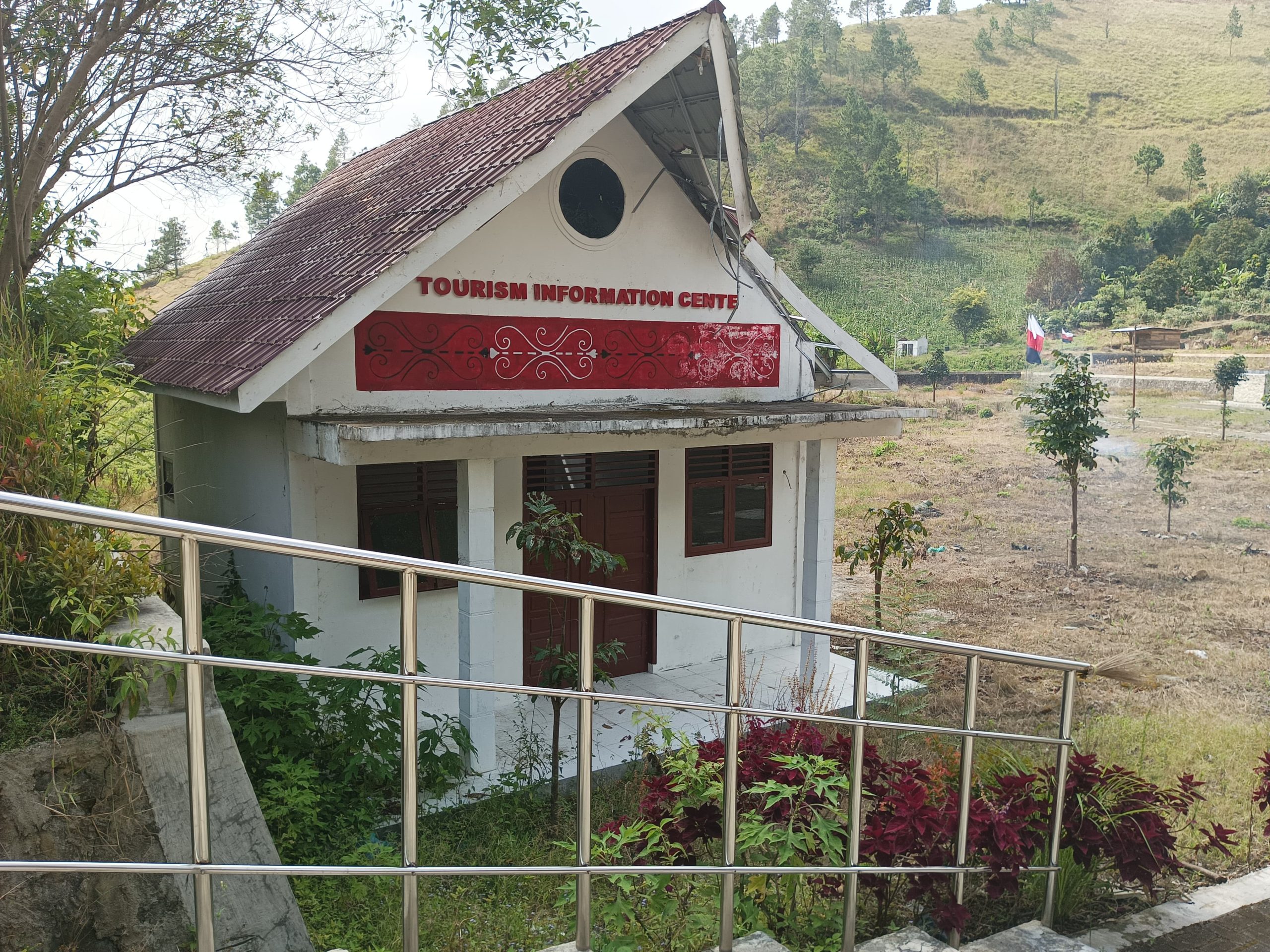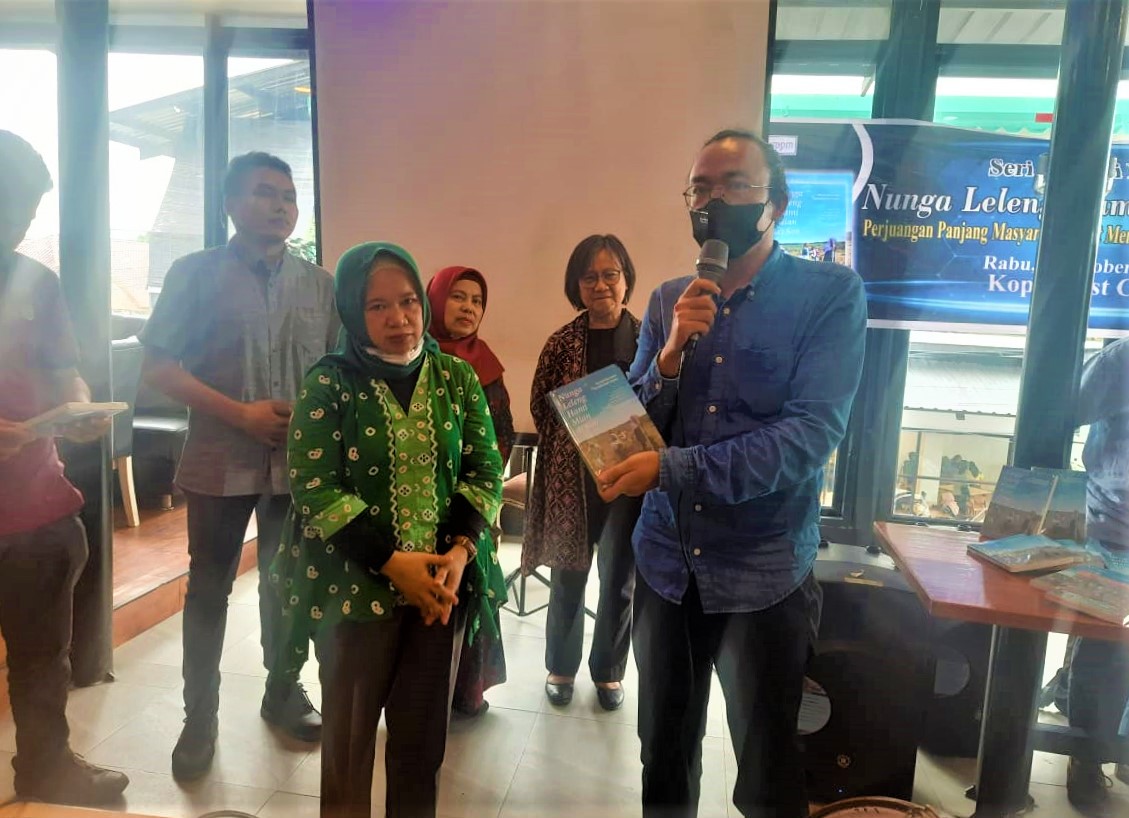Medan, Based on community reports regarding the findings of several human-shaped sculptures, and unreadable characters to the Balige Culture Service which was forwarded to the North Sumatra Province Archaeological Center, the team from the North Sumatra Province Archaeological Center (hereinafter abbreviated as Balar Sumut) was led directly by the Head of BALAR North Sumatra, Dr. Ketut Wiradnyana, M.Si consisting of Churmatin Nasoichah, S.Hum, Defri Elias Simatupang, M.Si, Andri Restiyadi, MA., Tony Sitorus, Rudy Hartono, and Anwar Bahri conducted a survey in Simare Huta Matinggir Village on 11-14 December 2021 .
To arrive at the location from where the team was staying, it took about 2 hours by road or about 17.5 km to Simare Huta Natinggir Village. Starting from smooth paved roads, potholes, to rocky roads, you must pass to reach the village. Eucalyptus tree (Eucalyptus melliodora) managed by PT. Toba Pulp Lestari, seen lined up on the edge of the cobbled road.
Arriving at the house of Tomu Pasaribu, Raja Huta Natinggir, the group was greeted by the indigenous people of Natinggir. Before visiting the location of the inscribed stone, the team took the time to talk with the indigenous people of Natinggir regarding information about the inscribed stone. That afternoon at the same time enjoying lunch that has been provided by the indigenous people of Natinggir. At first we wanted to visit the location that very afternoon, but were advised by the community, it is better to leave in the afternoon. The reason for leaving in the afternoon is because in that location there are many beehives. It is said that Liang Datu Ronggur until now is believed by the indigenous people of Natinggir to be one of the places they sacred as the petilasan of Datu Ronggur, to be precise the place of Datu Ronggur’s hermitage.
One of the elders of the Natinggir indigenous community said, “In that place, in the hole there is a spring that can cure all kinds of diseases. The burrow was also used to store weapons in ancient times, and the place where our ancestors used to be imprisoned.”
One member of the culture-loving community who was also present at the time added, “The last time we were there, there were also white ceramic bowls. Maybe it’s the remains of the people who meditated in that place before.”
The information obtained at the meeting strengthened the team’s intention to visit the location. On that occasion, we were also shown the genealogy of the Pasaribu Gorat family who inhabited the area.
That afternoon, our team was invited by the local community to visit the parhutaan na jolo (old village) and ancestral graves around Tomu Pasaribu’s house. Parhutaan na jolo Natinggir currently still leaves the harbangan or entrance gate and parik or the old village fence. The parik in question is a mound of earth in the form of an irregular plane with a gate on the west side which has been overgrown by trees. Approximately 100 m to the west, there is an old tomb complex in the form of an elevated land of approximately 75 cm, rectangular in shape which is considered the tomb of the ancestors of the indigenous people of Natinggir. We recorded not only one tomb at that location, but dozens of tombs. The tombs are similar but have different sizes. Currently the condition of the tombs is covered by weeds and shrubs, making it difficult to identify the number and area of the area.
After lunch, the team went to the location of the slate. We traveled to the location which is approximately 3 km to the west by four-wheeled vehicle. We were accompanied by the Head of the section for the preservation of cultural heritage, museums, and traditions, Friska Hutagalung, members of the Huta Natinggir cultural heritage community, and several members of the local community. “We continue on foot,” said a resident. We continued our journey on foot for approximately 1.5 hours. The path we took was quite steep and steep with a slope of about 30°–45°. We also had to cross Aek Simare, which has clear waters and has large yellow-brown sedimentary floors. Plus, at that time the sky was dripping with a drizzle which added to the slippery path we were on.
Arriving at the mouth of the cave, on the roof of the cave there are dozens of honey bee nests. “Here, honey is often taken, if there are residents who dare to go upstairs,” said a resident. In that place can still be seen stairs, ropes, and plastic clothes for mining honey bees. “Here, it’s written here,” said a community member, pointing his finger at a large rock at the mouth of the cave. We saw on the surface of the boulder carved letters and pictures that were quite deep. At first glance, the images on the stone represent male and female figures. “It’s interesting. There is an ancient Batak script and an ancient Sumatran script,” said our Epigrapher, Churmatin Nasoycah, S.hum. which directly identifies the form of the character (paleography). Due to the increasingly dense and heavy raindrops, we had to move quickly to document the findings through notes, photos, and videos. Upon further inspection, it turned out that the characters were not only carved on one side of the stone, but on all three sides. “Until now, this finding is the only ancient Sumatran script found in the Toba area,” said Churmatin Nasouchah, S.Hum. “Usually we only find the ancient Batak script written in the pustaha. It has a mixture of ancient Sumatran scripts,” she continued.
The findings of the ancient Batak script and the ancient Sumatran inscription in Liang Datu Ronggur, Simare Huta Natinggir Village are a rare and interesting early finding. The existence of the Ancient Sumatran script in the Old Batak language and script inscriptions still leaves a swarm of questions that inspires the spirit of further research. Why are ancient Sumatran scripts and ancient Batak scripts carved into one inscription used? Is the inscription older than the Old Batak script contained in the Laklak pustaha? What is the relationship between these inscriptions and ancient Sumatran scripts found in the southern part of North Sumatra? And there are many other problems that need to be followed up. In addition, the existence of community reports on archaeological findings in their area is an initial action for good follow-up and synergy between stakeholders, in this case central, regional government institutions, culture-loving communities, and local indigenous peoples.
Review Team
Source Copy/Paste: NORTH SUMATRA ARCHAEOLOGY CENTER
https://balarsumut.kemdikbud.go.id/tim-balar-sumut-telusuri-batu-bertulis-liang-datu-ronggur-di-desa-simare-huta-natinggir/








